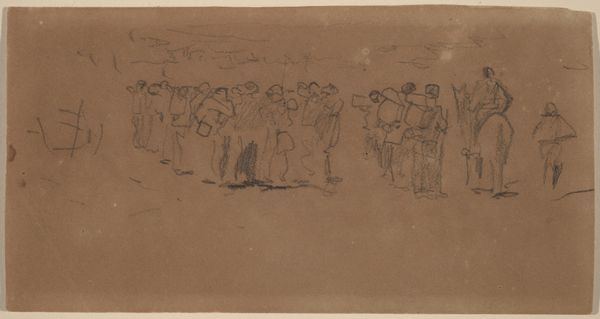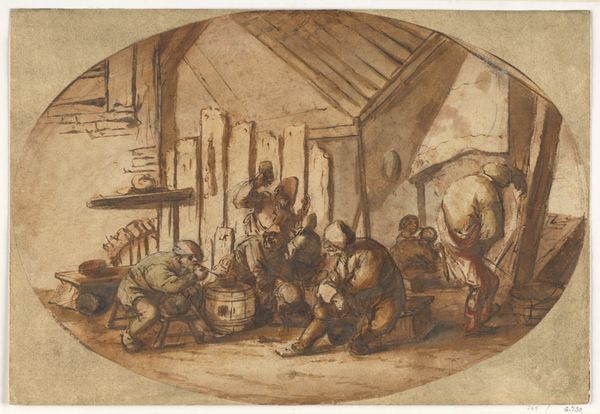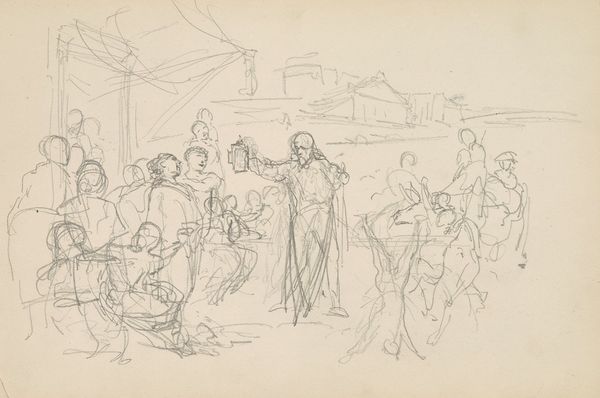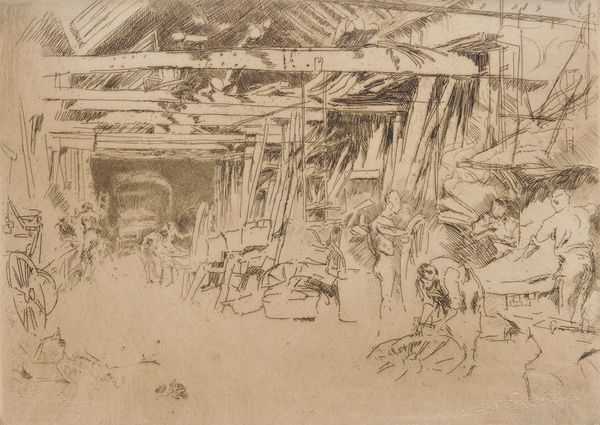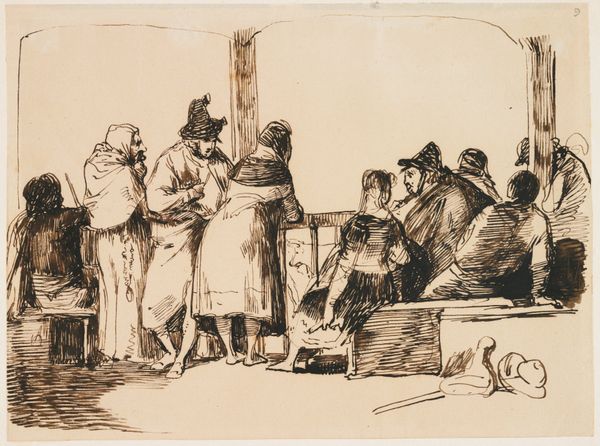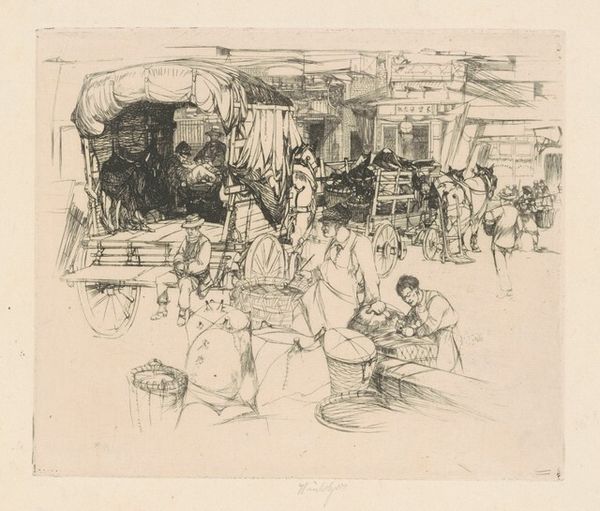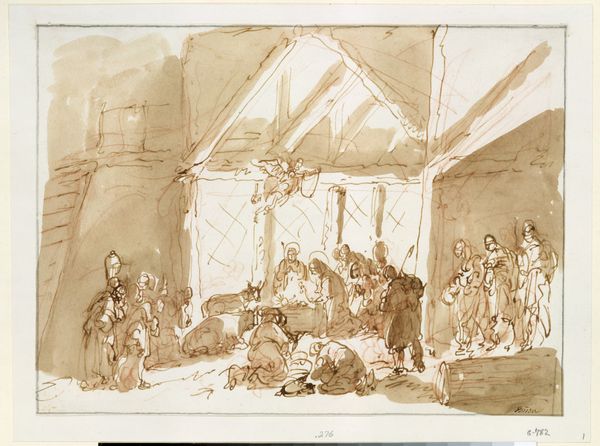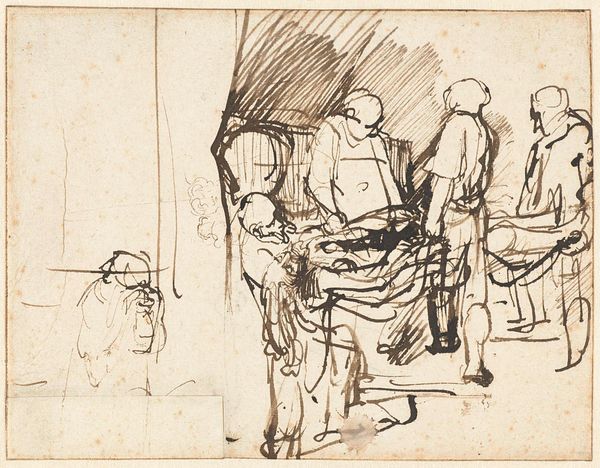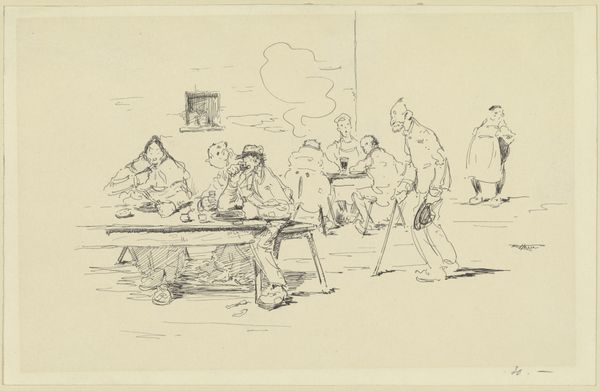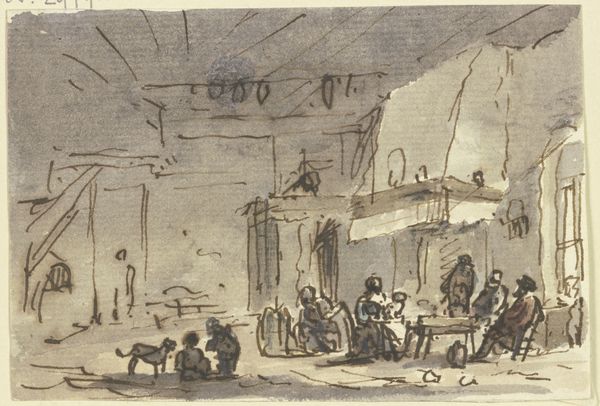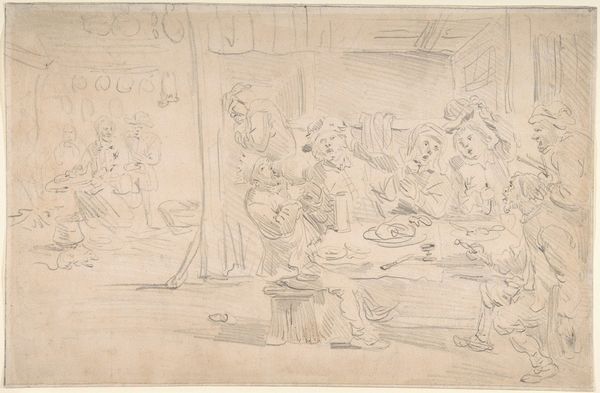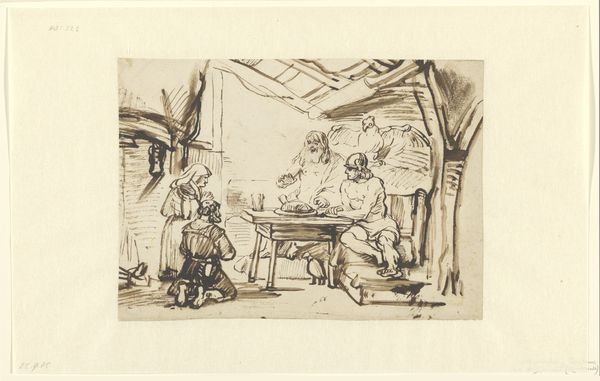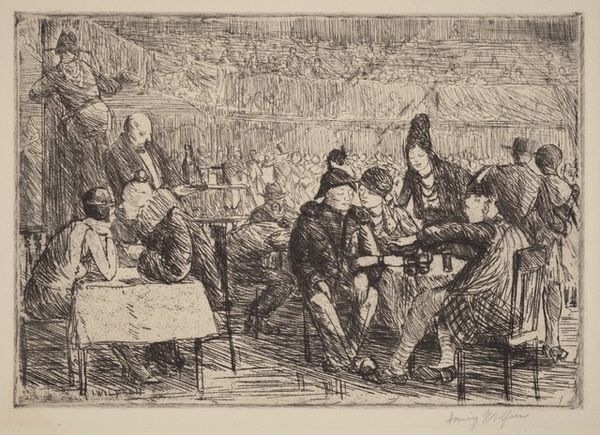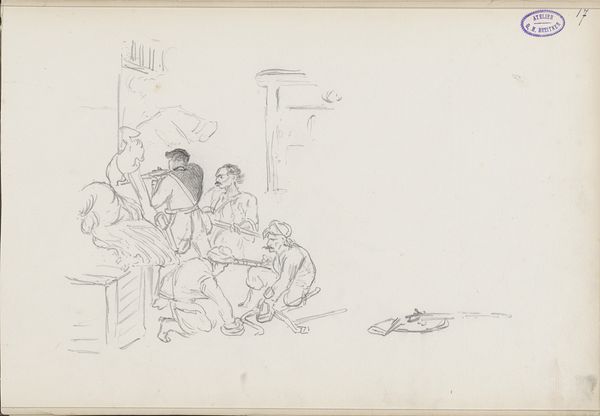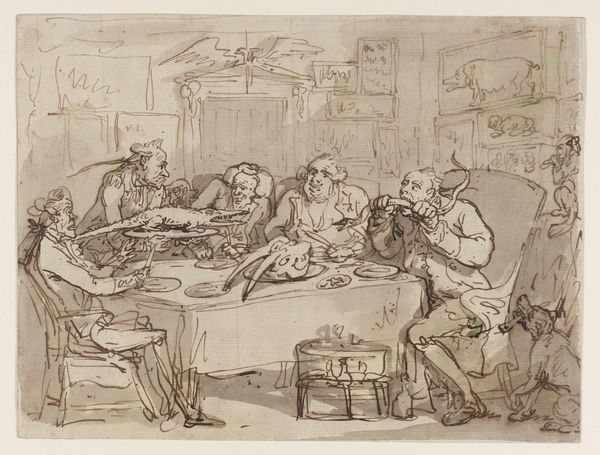
#
toned paper
#
water colours
# print
#
possibly oil pastel
#
handmade artwork painting
#
coloured pencil
#
underpainting
#
painting painterly
#
watercolour bleed
#
watercolour illustration
#
watercolor
Copyright: National Gallery of Art: CC0 1.0
Pop Hart's lithograph, ‘Picnic Party,’ captures a scene of leisure using humble materials: crayon and ink applied to a smooth stone. The grainy texture results from the crayon's greasy composition, allowing it to adhere to the porous surface. Hart then likely applied an acid solution to etch the image before printing. The lithographic process democratized art production in the 19th century, enabling mass distribution. Yet here, Hart seems less interested in pristine reproduction than in conveying a raw, immediate impression. The figures are roughly sketched, their forms emerging from a network of lines and smudges. There’s a sense of directness, even imperfection, that connects the image to the hand of the artist. This is not a polished, idealized vision of recreation. Instead, the lithographic process, with its inherent susceptibility to accident and variation, mirrors the unpretentious quality of the gathering itself. By embracing the material qualities of lithography, Hart elevates a commonplace subject, reminding us that art can be found in the everyday, and in the very act of making.
Comments
No comments
Be the first to comment and join the conversation on the ultimate creative platform.
